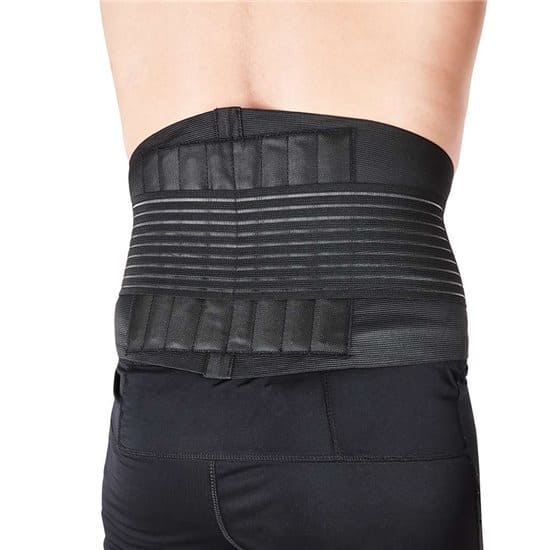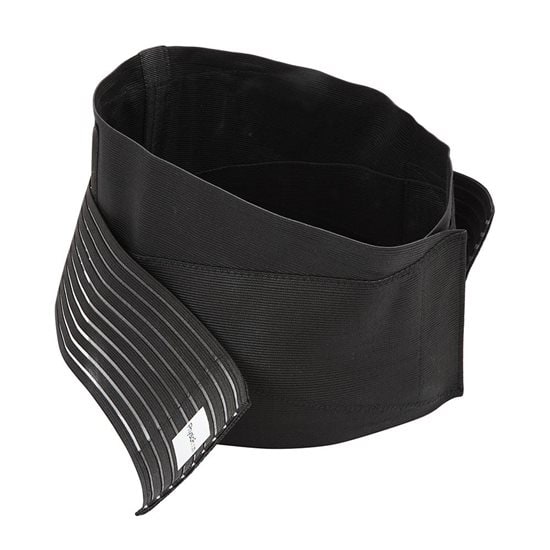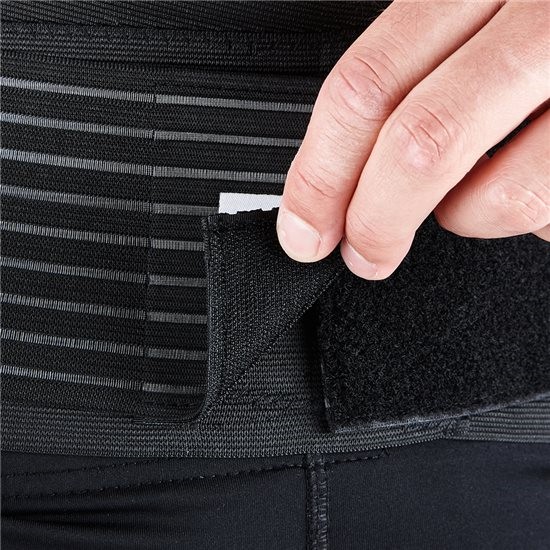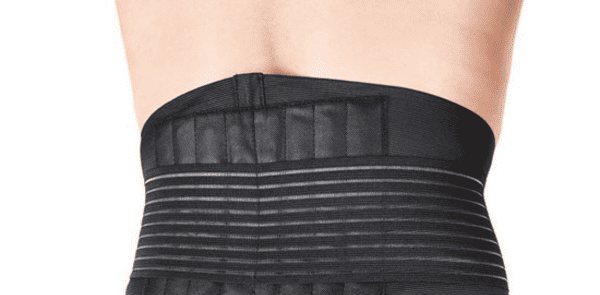Your lower back does all the heavy lifting to keep you moving. But have you ever wondered how it manages to handle all those twists, turns, and everyday hustle? Paired with stress, this unsung hero can be a bit weary. That’s where the lumbar lower back brace swoops in, promising support and relief.
Curious? Join us for a glimpse into the world of back support, giving your body the care it deserves!
The Basics of Lumbar Support

The lumbar region, located in the lower back, acts as a support anchor for the spine. It comprises five vertebrae between the thoracic spine and the sacrum. Think of it like the bridge connecting the upper and lower spine, creating a strong foundation for all kinds of movements. Overall, it is integral to our body’s stability and flexibility.
Why is it important to understand how crucial the lower back (lumbar region) is? It’s because it supports daily activities. If not cared for, issues like discomfort, poor posture, or injuries can arise. Proper support is essential for overall spine health and well-being.
Note: The thoracic spine is the upper part of your back, where the ribs attach. The sacrum is the triangular bone at the base of the spine, connecting to the hip bones.
Purpose of Lower Back Support

People turn to lumbar braces for specific reasons, often seeking relief from discomfort. These braces act as supportive allies, particularly for those experiencing lower back pain. Mostly due to conditions like herniated discs, muscle strains, or sciatica. By providing targeted support to the lumbar region, they help distribute the load. This, in turn, helps ease the strain and makes everyday activities more comfortable.
Moreover, lumbar support braces play a crucial role in pain relief. By stabilising the lower back, they minimise movement that could aggravate injuries. This allows the body to heal more effectively.
Additionally, lumbar braces contribute significantly to maintaining proper posture. They remind and support your spine to stand or sit the right way. Whether sitting a lot or being active, these braces help you keep a good posture. Ultimately, reduces stress on your lower back and keeps your spine healthy.
The components
Lumbar braces have key components that work together to provide effective support. The main elements include a sturdy frame, adjustable straps, and cushioned padding. The frame, often made of plastic or metal, offers stability to the lumbar region. Adjustable straps allow for fit customisation, ensuring a snug and comfortable feel.
The materials used in lumbar braces play a vital role, with mesh being a common choice. Take, for instance, this mesh lumbar support. It’s breathable and lightweight, enhancing comfort during prolonged use. It allows air circulation, preventing excess heat buildup. Additionally, the mesh material is flexible, accommodating movement while maintaining support.
The lumbar brace works well because of its key parts. The frame gives support, stopping extra movements that could hurt your lower back. Adjustable straps let you make it comfy just for you. Plus, the mesh material keeps it breezy, making the brace good for various activities. Knowing about these parts helps you pick back support for back pain that fits your needs.
Mechanism of Action

A lumbar brace supports your lower back by acting like a stabiliser for the spine. Its strong frame gives structural reinforcement, preventing too much movement and reducing strain. This is especially helpful for conditions like herniated discs or muscle strains.
The lumbar brace helps your spine stay in a good position. It guides it to be straight and balanced, lowering the chance of discomfort or making existing problems worse. This support is crucial, especially during activities that stress your lower back.
Muscle engagement is another key aspect of the lumbar brace’s mechanism. By stabilising the lower back, nearby muscles respond in a healthier way. This not only gives better support but also helps muscles respond in a healthier way. In simple terms, the lumbar brace supports, guides alignment, and engages muscles for a stable and comfy lower back.
Potential benefits
Using a back support brace offers several potential benefits. First, it provides targeted support to the lower back. This eases discomfort associated with conditions like herniated discs, muscle strains, or sciatica. The brace’s stabilising effect also minimises excessive movements during daily activities. Next, it can contribute to improved spinal alignment. This, in turn, reduces the risk of misalignment-related discomfort. Additionally, a lumbar brace can enhance muscle efficiency around the lower back.
Limitations and considerations
Despite the benefits, users should be aware of certain limitations. Prolonged and continuous reliance on a lumbar brace may lead to dependency. This may weaken the natural support provided by the muscles. It’s crucial to use the brace as recommended by healthcare professionals.
Furthermore, while a lumbar brace can offer relief, it may not be a cure for underlying issues. Users should address the root cause of their discomfort through appropriate medical guidance. Moreover, by incorporating exercises and lifestyle changes alongside brace usage.
Individual comfort and fit vary, so finding the right lumbar brace is essential. Using it incorrectly, such as wearing it too tight, may lead to discomfort or skin irritation. Consulting with a healthcare professional ensures proper usage and maximises the benefits.
Round-up
To sum it up, lumbar braces are like supportive friends for your lower back. They help with discomfort, keep your spine in line, and make your muscles work better. But don’t rely on them too much – think of them as helpers, not a permanent solution. Ask your healthcare pros for the best way to use them. By using lumbar braces wisely, you can have a more comfy, supported, and healthier lower back.
Explore a variety of dependable back braces, including pregnancy belts, at Physioroom. Don’t miss the chance to discover the perfect support for your needs!Up next on your reading list: How to Wear a Lower Back Support Belt


